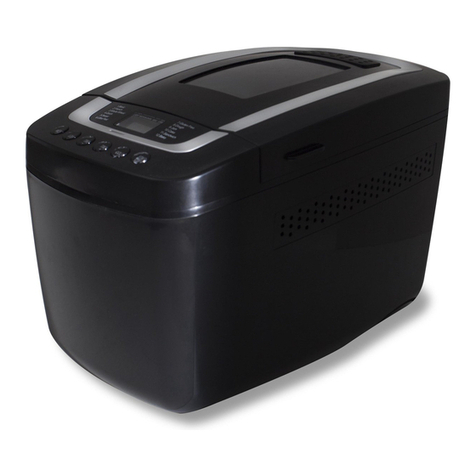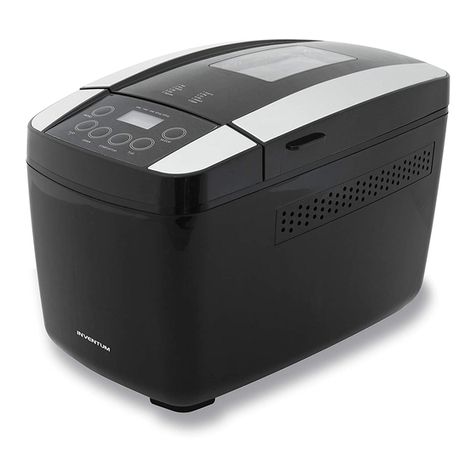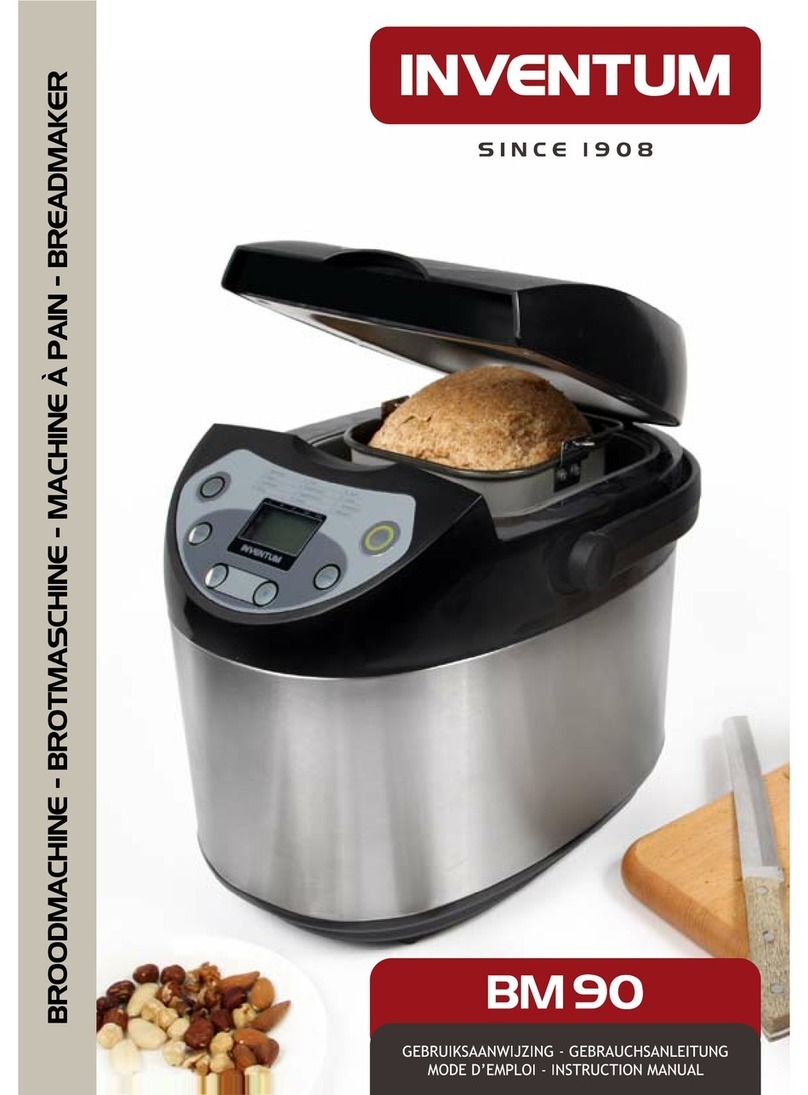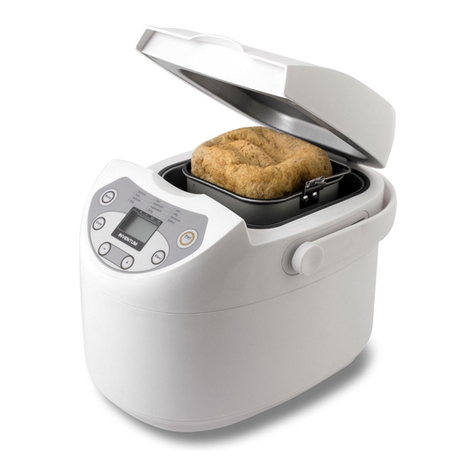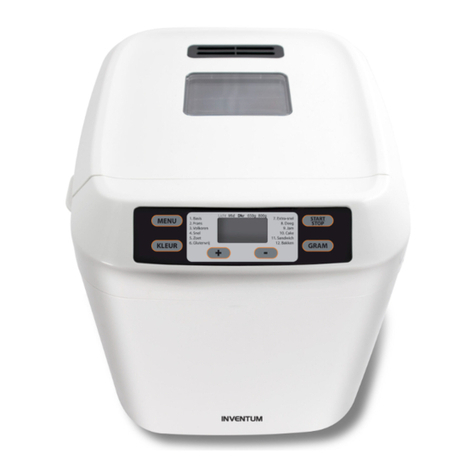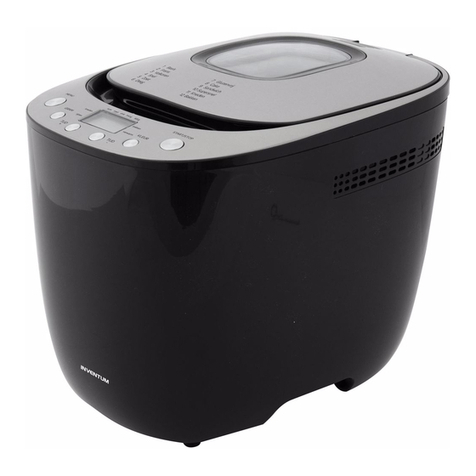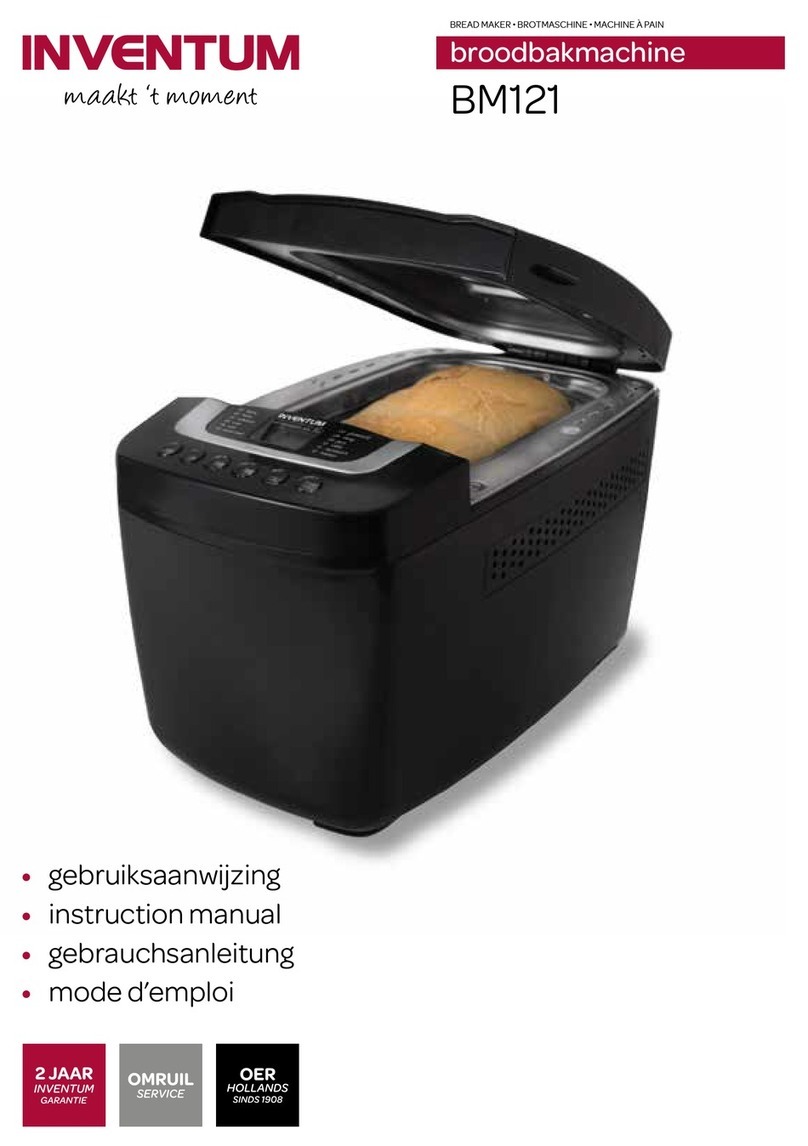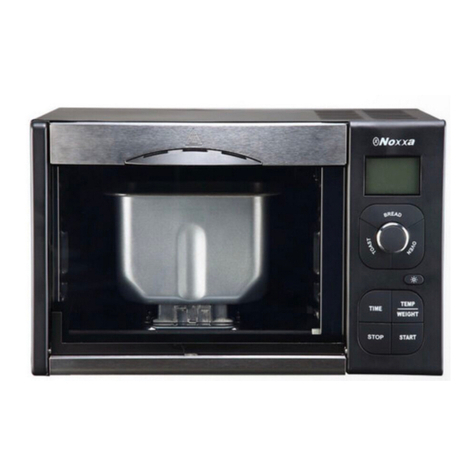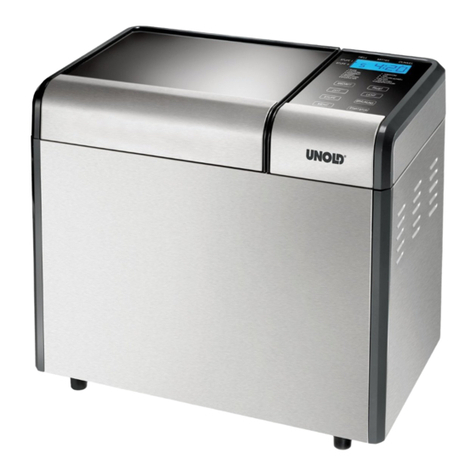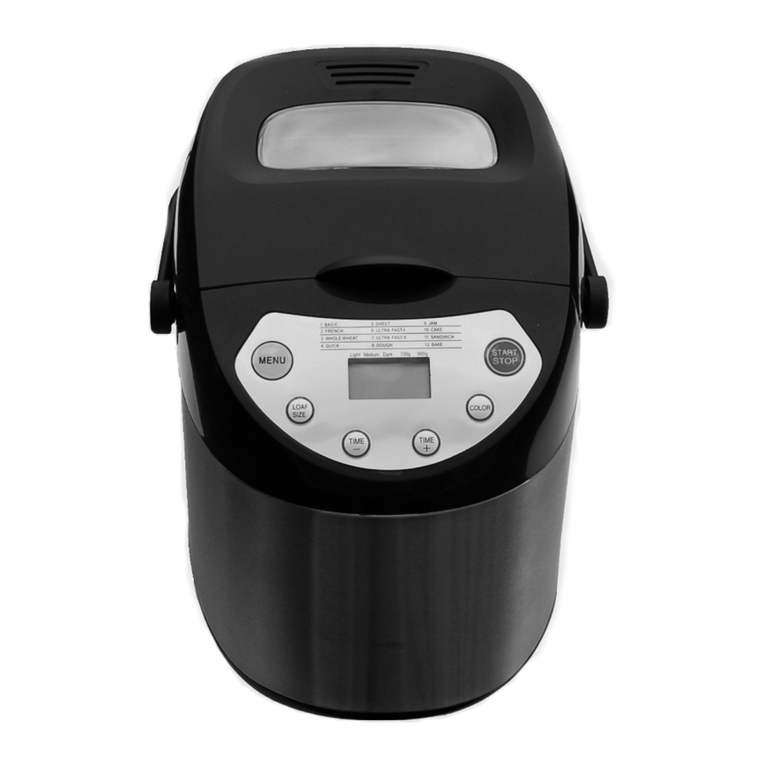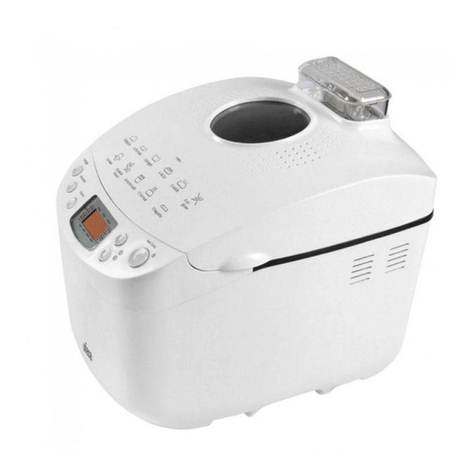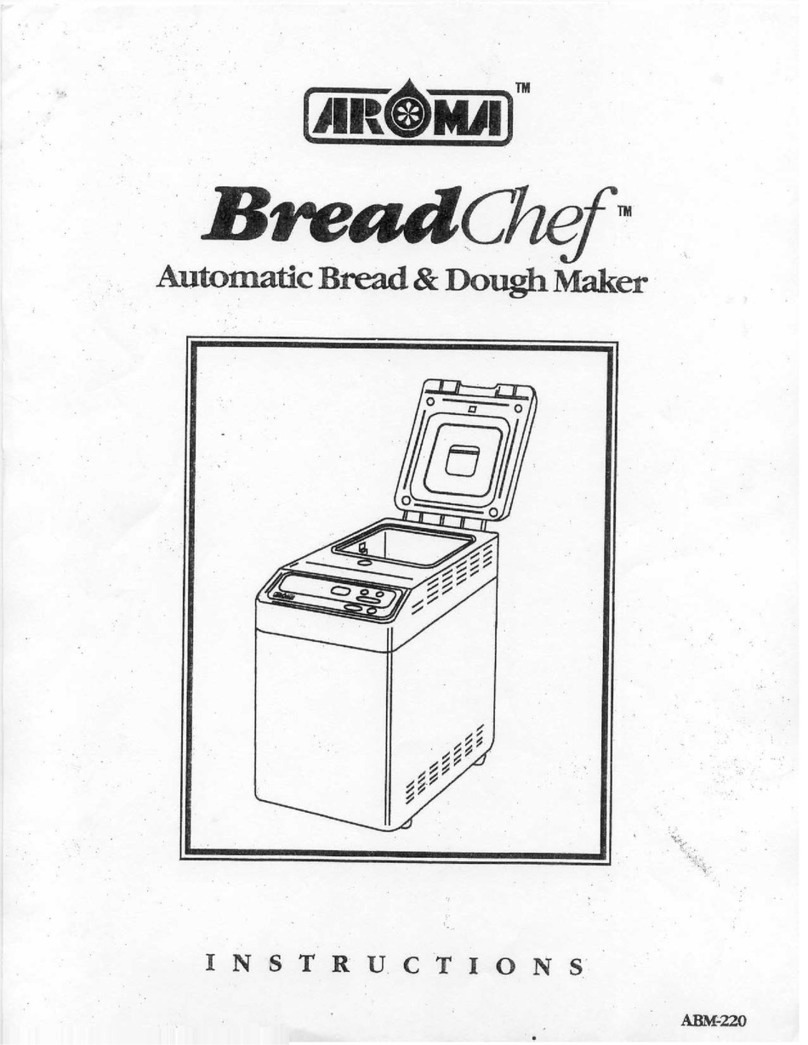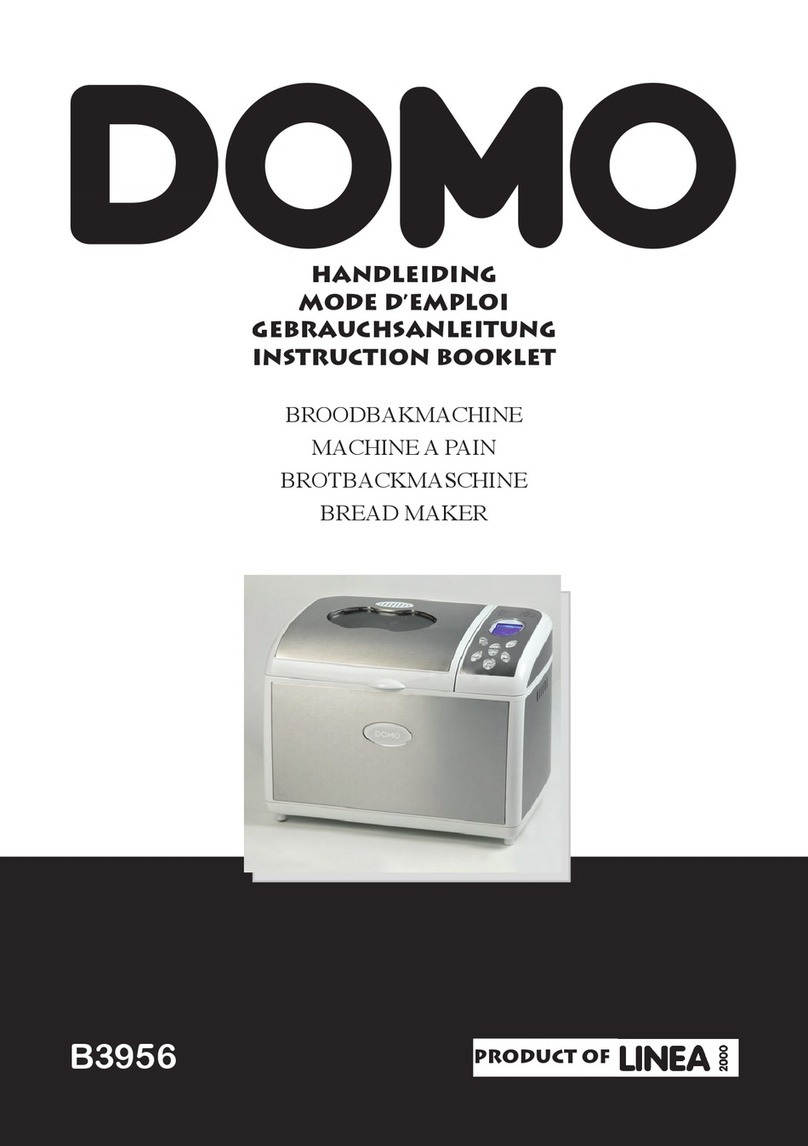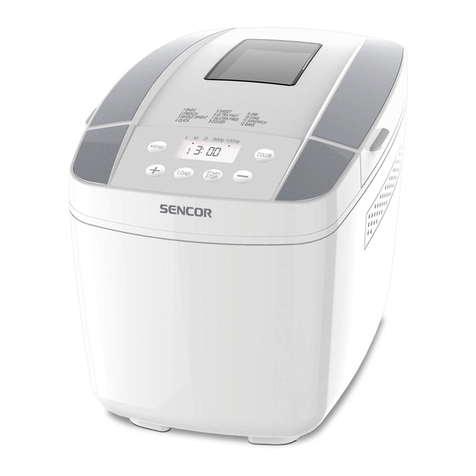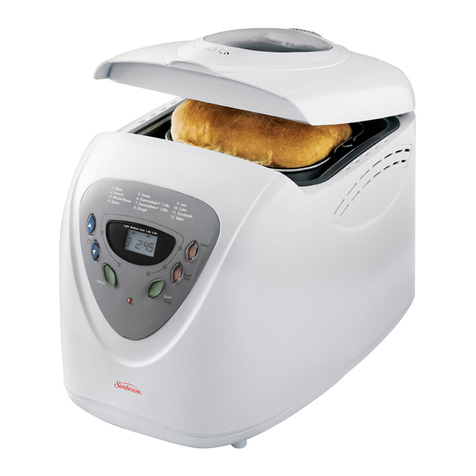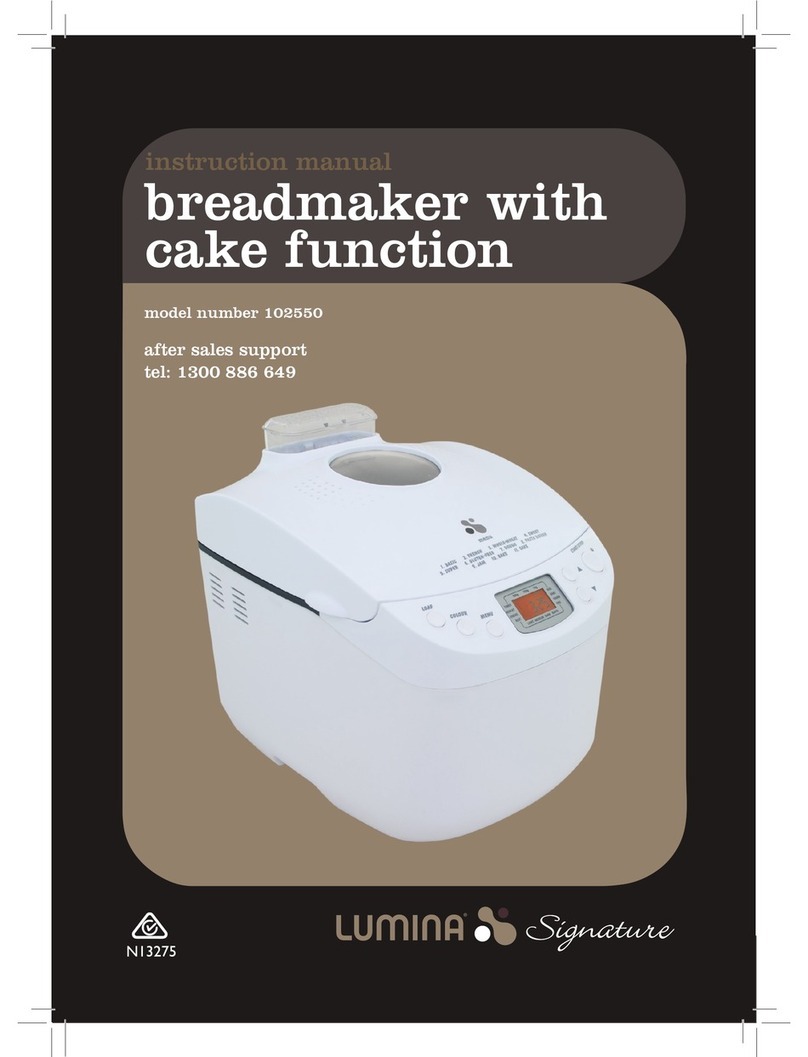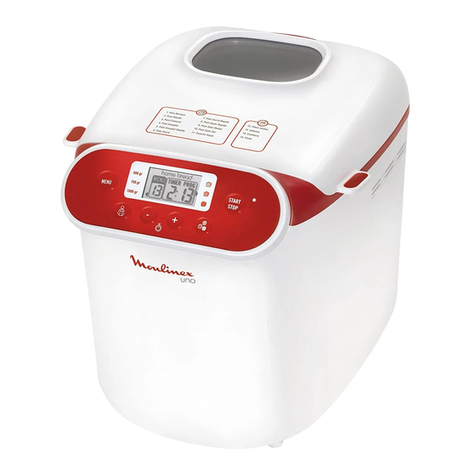9
die in de gebruiksaanwijzing staan, zijn
basisrecepten. Het kan voor komen dat er
meel gebruikt wordt wat minder vocht
nodig heeft dan aangegeven staat. Wij
adviseren 10 tot 20 ml. vocht te minderen.
Het probleem zal nu opgelost zijn.
Vraag: Als ik rozijnenbrood maak, zitten alle
rozijnen onderin. Wat kan ik hieraan doen?
Antwoord: De deegbal is waarschijnlijk te compact
om de rozijnen goed door het deeg te kunnen
kneden. Voeg bij het basisrecept 10 tot
20 ml. vocht toe, zodat de deegbal soepeler
is en de rozijnen er makkelijker door heen
gekneed kunnen worden. Let wel op dat de
rozijnen zelf niet te nat zijn.
Vraag: De korst is soms lichter, soms donkerder?
Antwoord: Dit kunt u zelf instellen door de toets
“korst”. Voor een lichte korst zet u het
apparaat op licht (Low), voor een donkere
korst zet u het apparaat op donker (Hi).
Vraag: Wat is er gebeurd wanneer het brood even
hoog gekomen is als het deksel?
Antwoord: U heeft teveel gist en/of suiker gebruikt,
waardoor er meer gasbellen ontstaan zijn
binnenin het brood en het teveel gerezen is.
Vraag: Waarom mag u geen brood maken op basis
van fruit met de werkwijze “vlug”?
Antwoord: De gisttijd wordt verminderd bij dit
programma en wanneer u meer ingrediënten
gebruikt, wordt de baktijd ook beïnvloed
zodat u geen mooi resultaat zult krijgen
wanneer u dit programma met dergelijke
recepten gebruikt.
Vraag: De broodmachine kneedt trager bij het
maken van zwaardere broden?
Antwoord: Dit is een normaal verschijnsel wanneer u
deze recepten gebruikt. Dit is geen probleem
voor de machine, het is wel aan te raden een
eetlepel vloeistof toe te voegen.
Voordat u het toestel weg wilt brengen voor reparatie
Uw brood mislukt steeds
.
Wij adviseren u één maal een brood te maken met een
kant-en-klare broodmix van bijvoorbeeld Koopmans
of Honig. Deze kant-en-klare mixen hoeven alleen nog
maar aangevuld te worden met water en boter. Is het
resultaat goed, dat betekent dat uw machine in orde is en
zult u de versheid van uw normale ingrediënten moeten
controleren. Is het resultaat slecht, dan kunt u overleggen
met onze klantenservice of technische dienst wat u het
beste kunt doen. Het telefoonnummer vindt u op de
achterkant van deze gebruiksaanwijzing.
Let op: indien u een kant-en-klare mix gebruikt, dient u
rekening te houden met de hoeveelheid mix. De meeste
kant-en-klaar mixen zijn voor brood van 800 gram.
Het toestel werkt niet
- Is het ingeschakeld?
- De temperatuur van de broodmachine is te hoog
Het brood is ingezakt/Het midden is vochtig
- Het brood werd te lang in het bakblik gelaten na het
bakken.
- Er is teveel water of gist gebruikt.
Er komt rook uit de luchtgaten
- De ingrediënten zijn misschien op het
verwarmingselement gemorst.
of het brood is nog niet afgekoeld. Indien de
anti-aanbaklaag versleten is, adviseren wij
u een nieuw bakblik aan te schaen. Om
erachter te komen wat de oorzaak exact is,
adviseren wij u het volgende: zodra de
broodmachine klaar is, haalt men het bakblik
compleet met brood uit de machine en laat
het geheel 15 tot 20 minuten afkoelen op
het aanrecht. Houd daarna het bakblik
ondersteboven en schud het brood lichtjes
uit het bakblik. Laat het brood nog eens
15 minuten afkoelen op een rooster alvorens
het aan te snijden.
Vraag: Er is speling ontstaan op de kneedhaak. Hoe
komt dit en wat kan ik hieraan doen?
Antwoord: De anti-aanbaklaag aan de binnenkant van
de kneedhaak is dik, zacht en nog niet
volledig uitgehard. Dit uitharden gebeurt
pas als de machine in gebruik genomen
wordt. Door de druk die op de kneedhaak
komt te staan tijdens het kneden, zal de
anti-aanbaklaag aan de binnenkant dunner
en harder worden, waardoor er meer ruimte
ontstaat. Dit zal in de eerste weken gebeuren
en is volkomen normaal. De kneedhaak slijt
als het ware een beetje uit en zal niet verder
gaan dan dat.
Vraag: De kneedhaak blijft in het brood achter, wat
kan hieraan doen?
Antwoord: Niets, het is namelijk goed dat de kneedhaak
in het brood achter blijft. Als dit niet het
geval zou zijn, bestaat de kans dat er een
groot gat onderin het brood komt. Nu kan
het brood eerst afkoelen alvorens de
kneedhaak verwijderd wordt. Door het
afkoelen wordt het brood steviger en zal
er geen gat in het brood ontstaan. Tijdens het
eerste gebruik kan het zo zijn dat de
kneedhaak in het bakblik achterblijft. Dit
heeft alles te maken met de voorgaande
vraag.
Vraag: Hoe kan ik de binnenkant van mijn
broodmachine schoonmaken als het deeg
overgelopen is?
Antwoord: De binnenkant van de broodmachine
kan gereinigd worden met een ovenreiniger.
Let op dat het verwarmingselement goed
beschermd wordt. Het verwarmingselement
kan gereinigd worden door de machine één
of tweemaal, zonder inhoud, een
bakprogramma te laten afwerken. Het
verwarmingselement zal dan schoonbranden.
Vraag: Vanwege een dieet mag ik geen brood met
suiker, kan ik suikervrij brood maken in de
broodmachine?
Antwoord: Ja, dat kan. U kunt suiker weglaten uit het
basisrecept. Let echter wel op. Als u geen
suiker gebruikt, mag u ook geen zout
toevoegen. Dit om toch een goede rijzing te
krijgen.
Vraag: Mijn brood zakt in op het moment dat de
machine overgaat van rijzen naar bakken?
Antwoord: Dit kan twee oorzaken hebben. Er kan teveel
gist zijn gebruikt of er is teveel water
gebruikt. In de meeste gevallen wordt het
veroorzaakt door teveel water. De recepten
